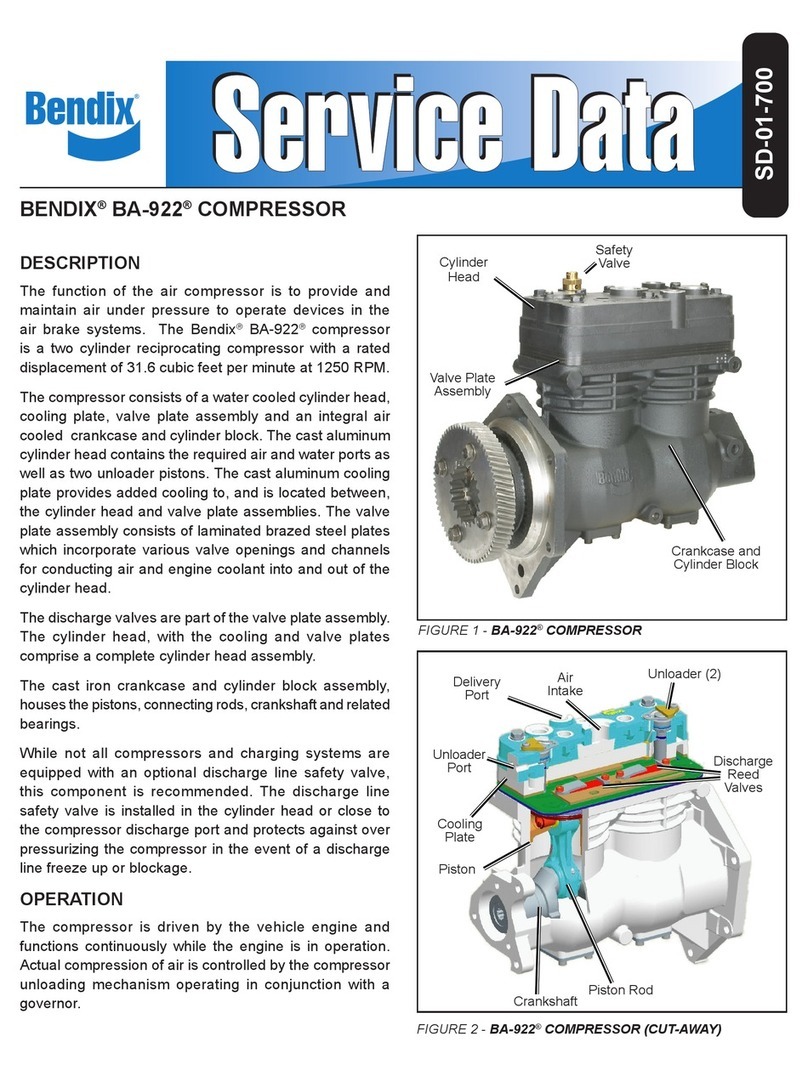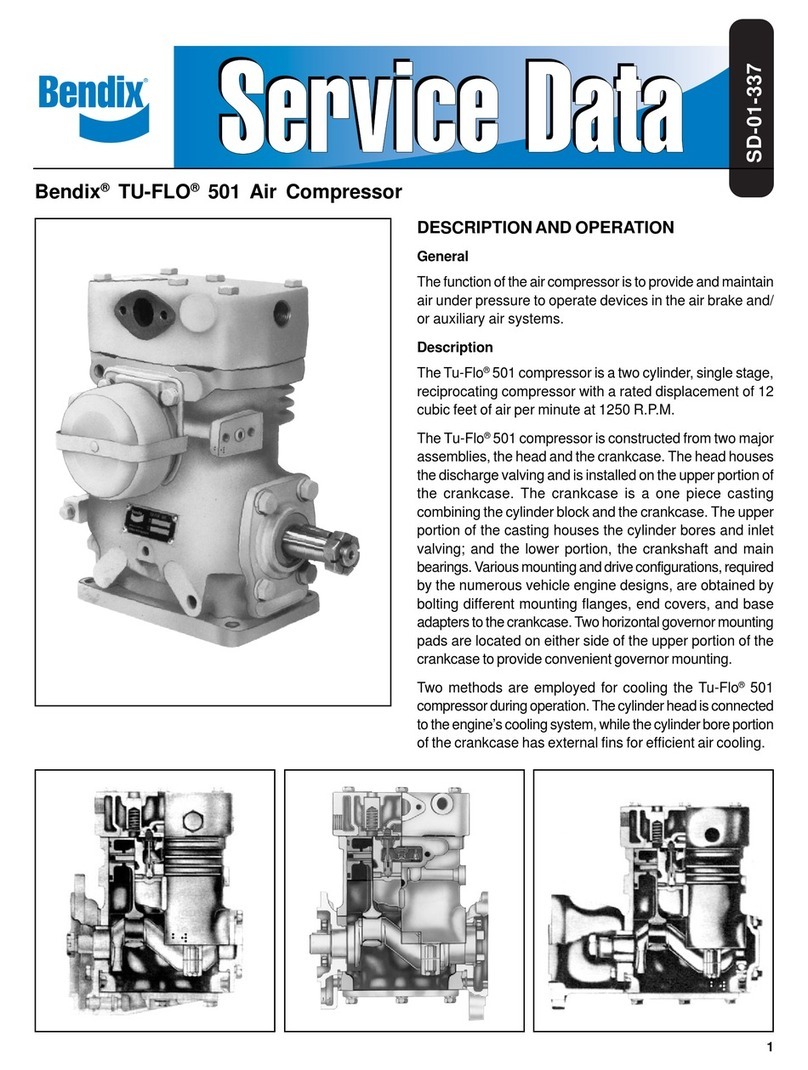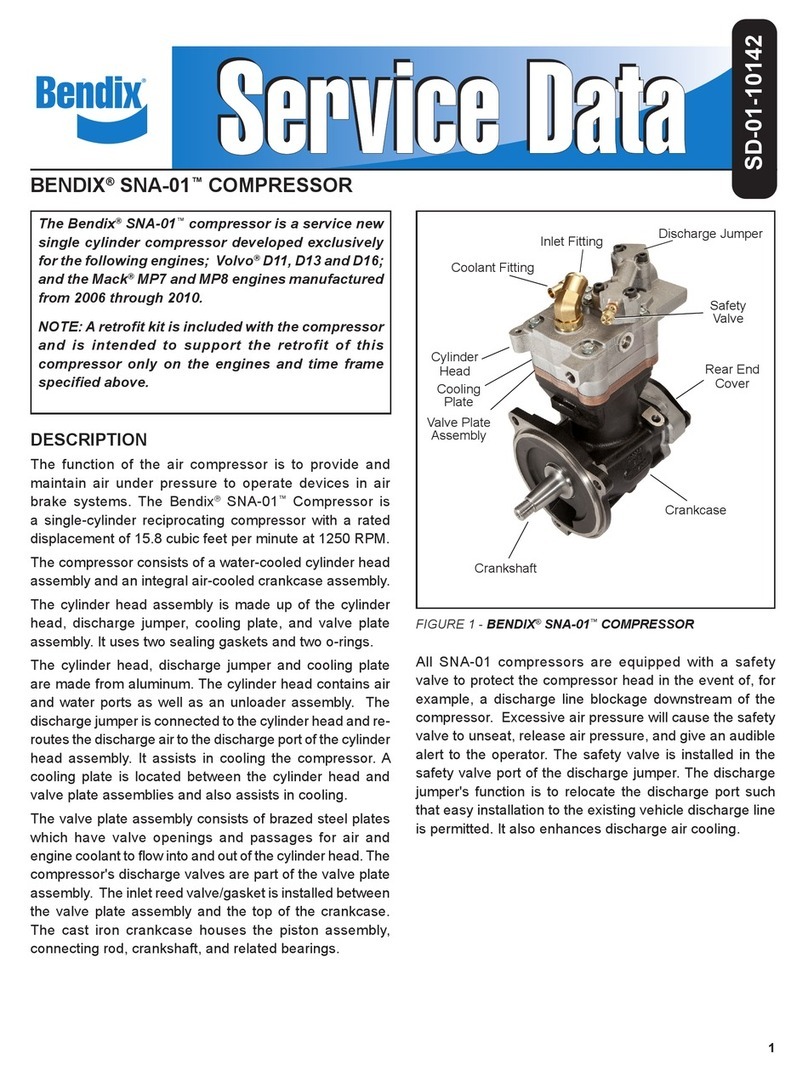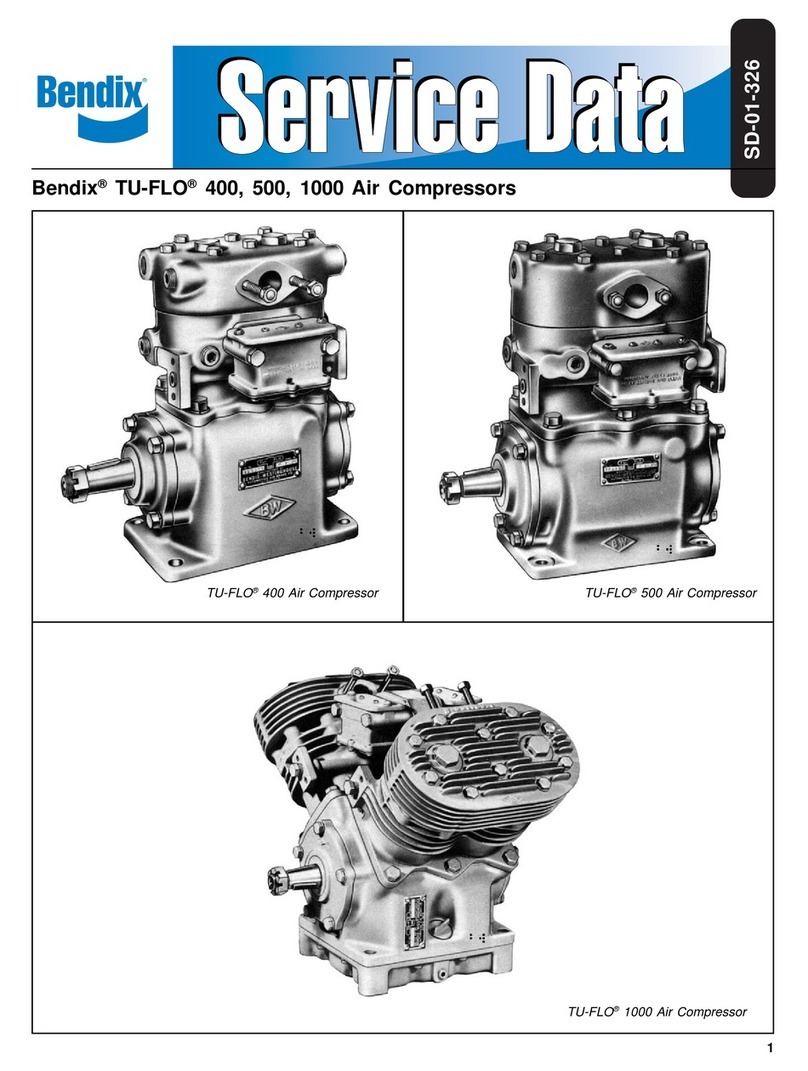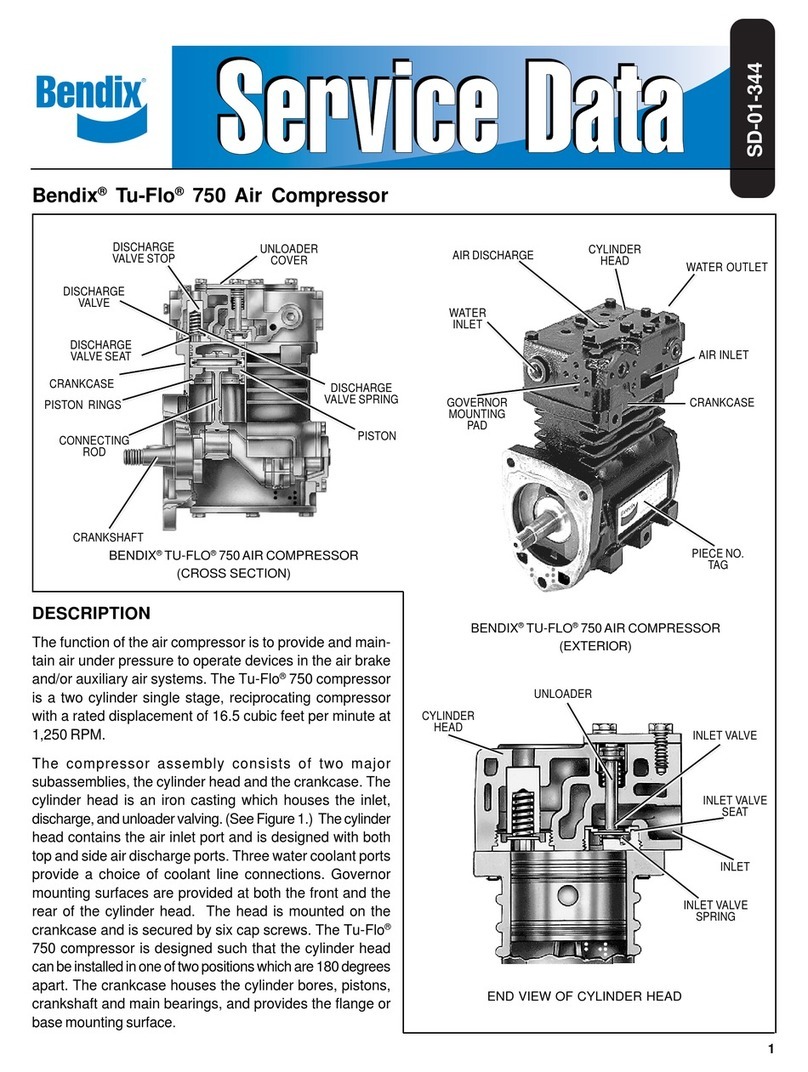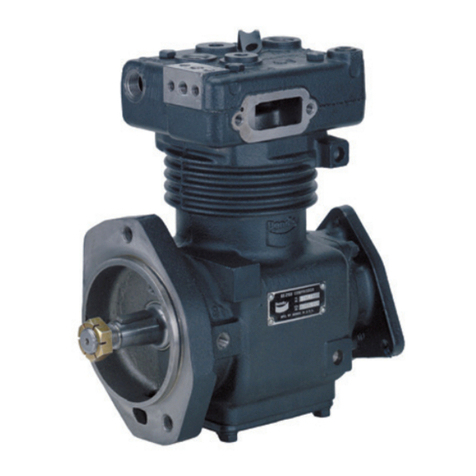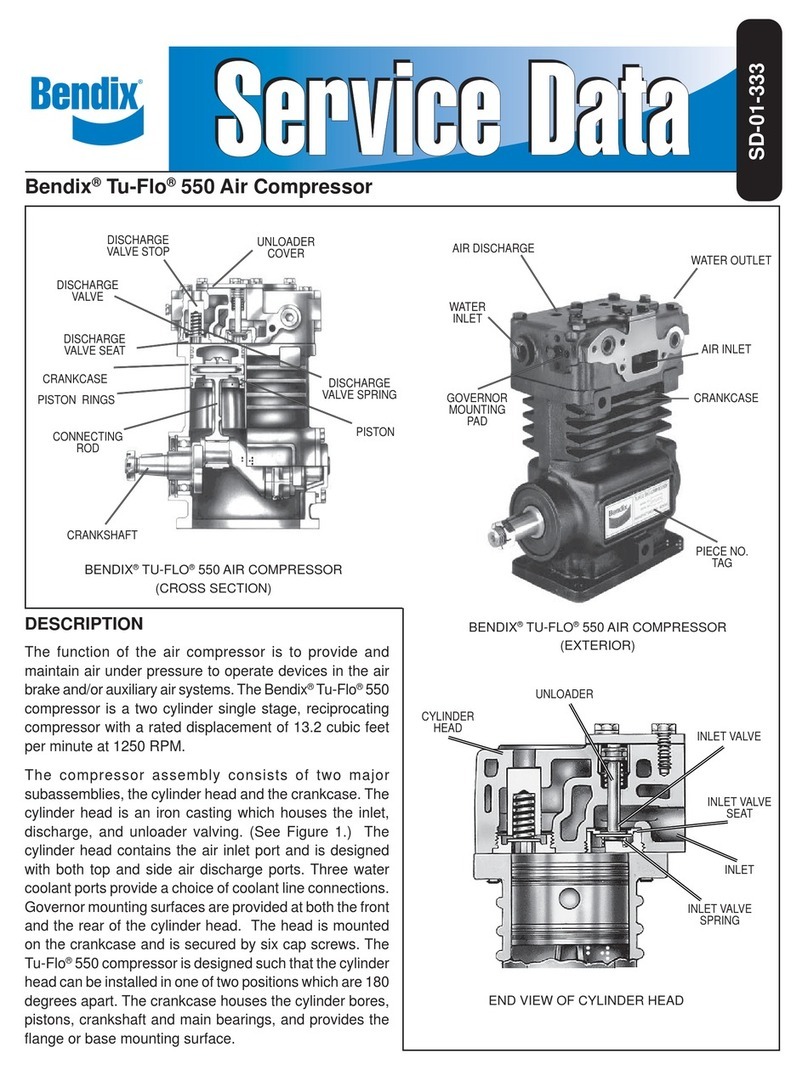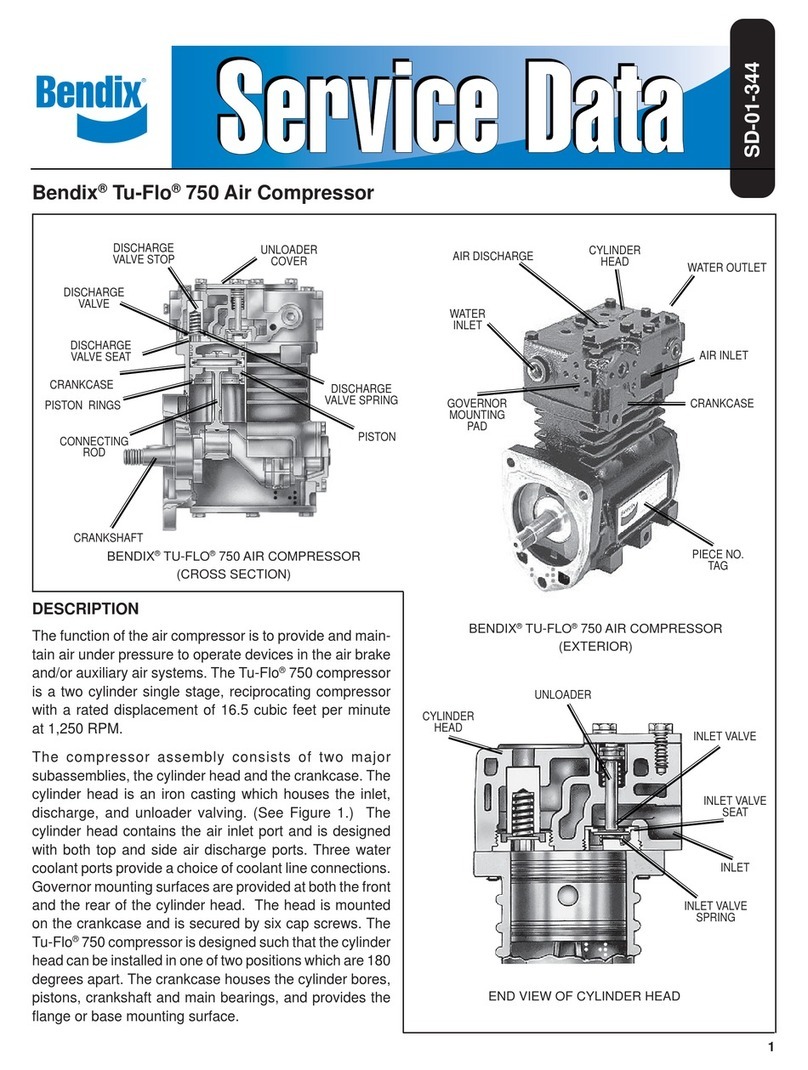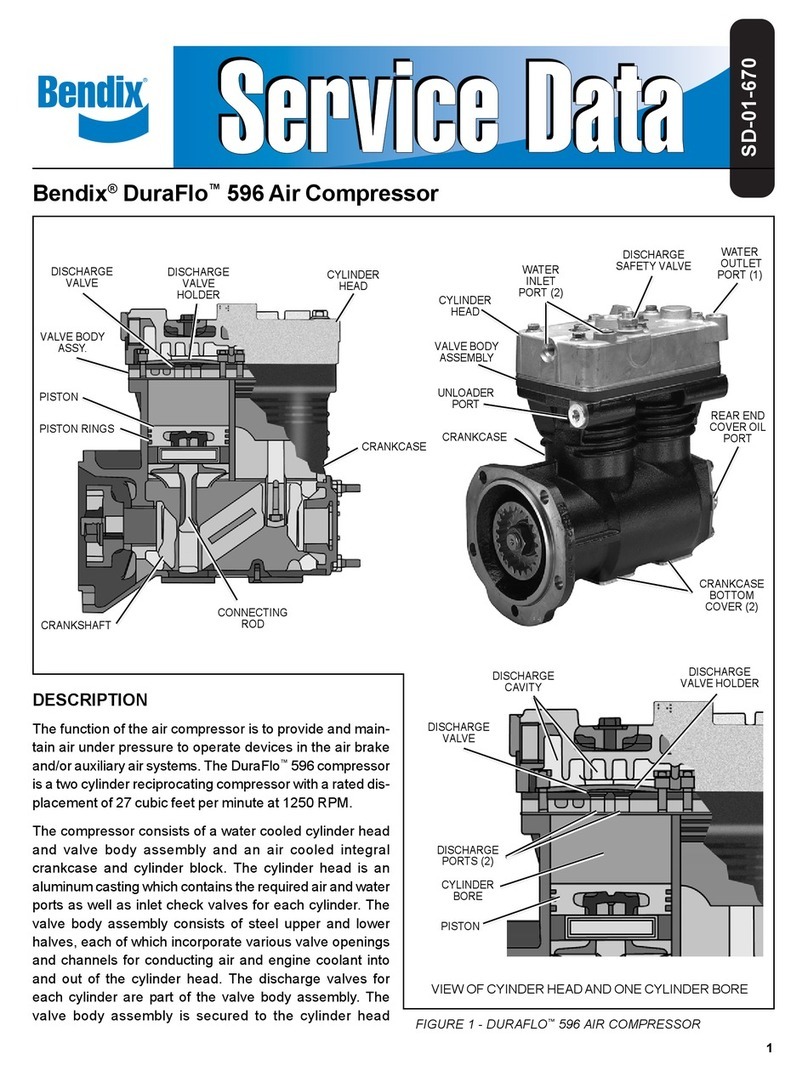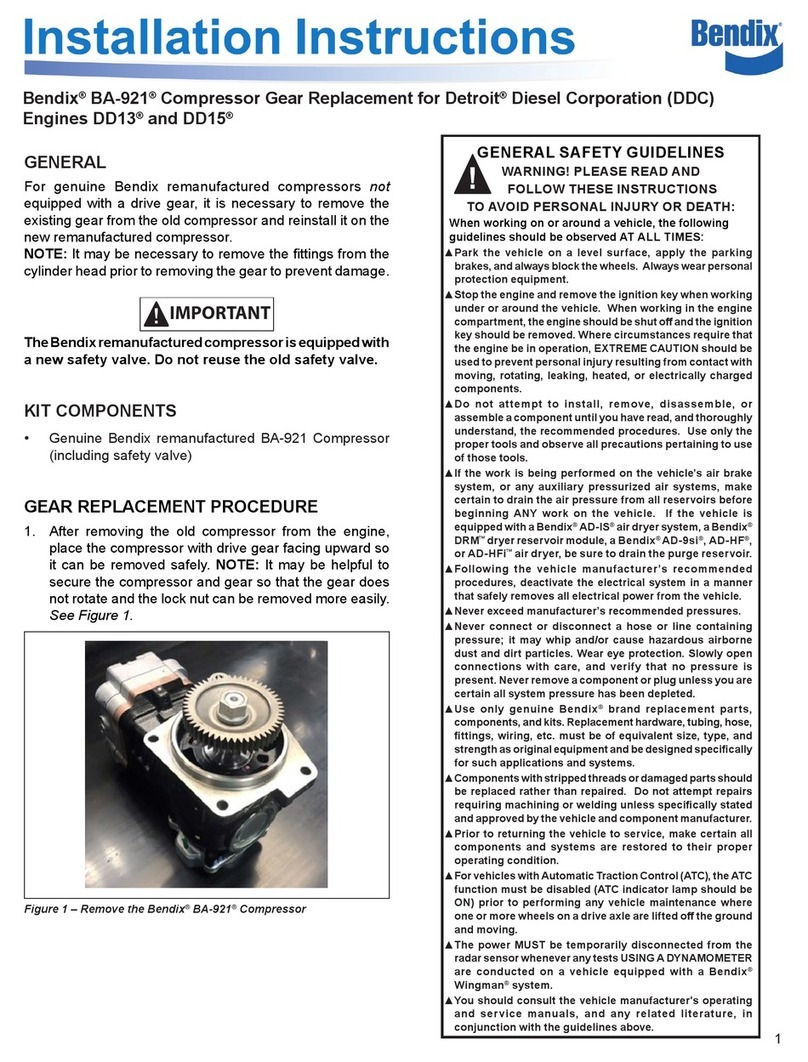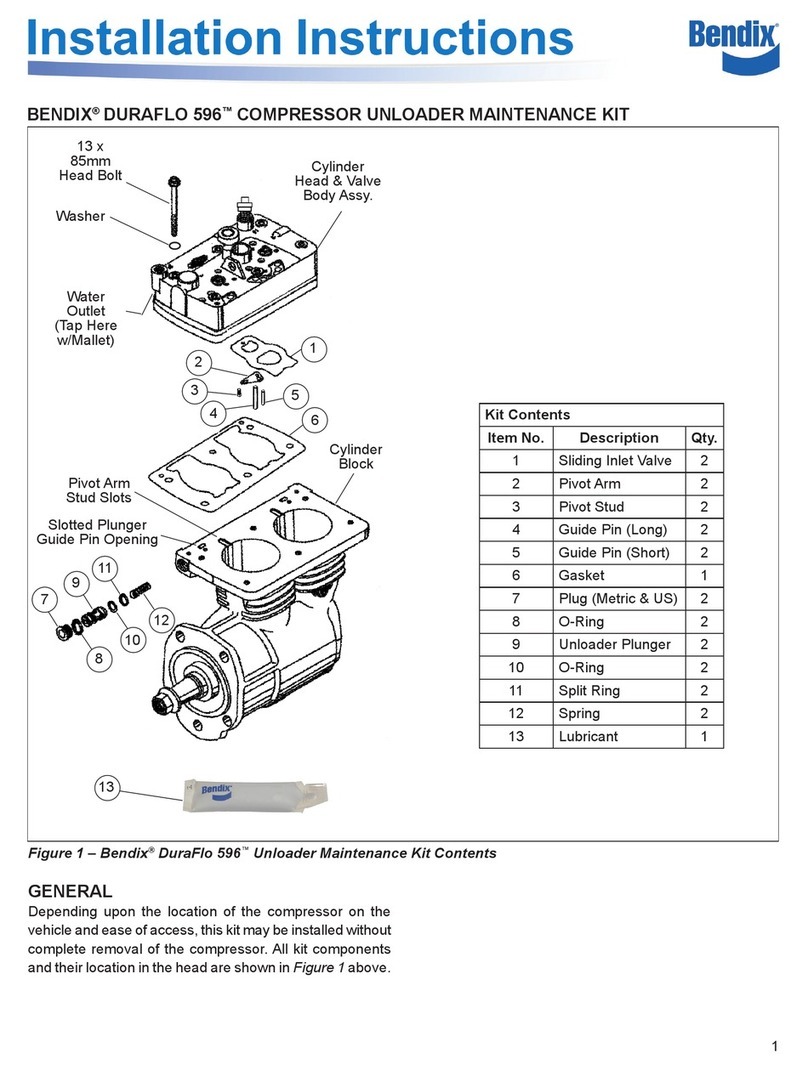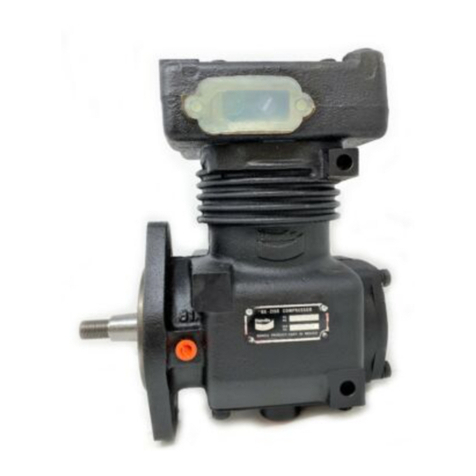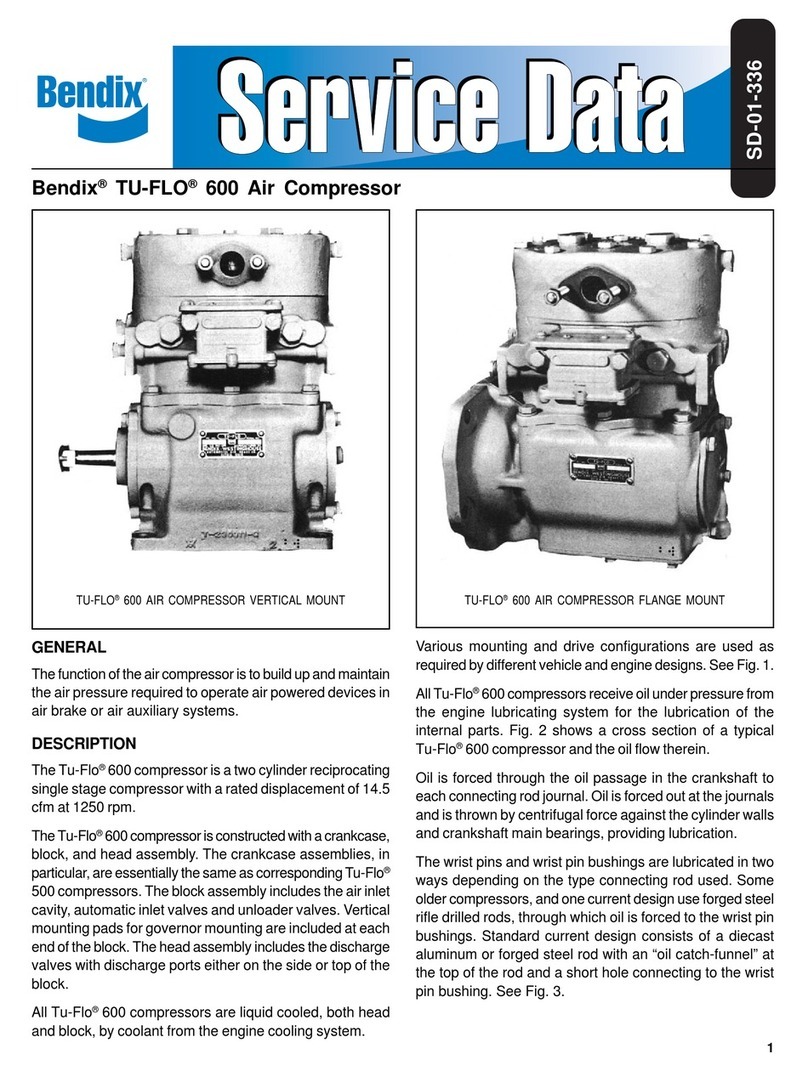
7
5. Following the vehicle manufacturer’s recommended
procedures, deactivate the electrical system in a manner
that safely removes all electrical power from the vehicle.
6. Never exceed manufacturer’s recommended pressures.
7. Never connect or disconnect a hose or line containing
pressure; it may whip. Never remove a component or
plug unless you are certain all system pressure has been
depleted.
8. Use only genuine Bendix®brand replacement parts,
components and kits. Replacement hardware, tubing,
hose, fittings, etc. must be of equivalent size, type
and strength as original equipment and be designed
specifically for such applications and systems.
9. Components with stripped threads or damaged parts
should be replaced rather than repaired. Do not attempt
repairsrequiringmachiningorweldingunlessspecifically
stated and approved by the vehicle and component
manufacturer.
10.Prior to returning the vehicle to service, make certain all
components and systems are restored to their proper
operating condition.
11. For vehicles with Automatic Traction Control (ATC), the
ATCfunctionmust bedisabled(ATC indicator lampshould
beON)priortoperformingany vehiclemaintenancewhere
oneormore wheelsonadrive axle areliftedofftheground
and moving.
REMOVAL
In many instances it may not be necessary to remove the
compressor from the vehicle when installing the various
maintenance kits and service parts. The maintenance
technician must assess the installation and determine the
correct course of action. These instructions are general
and are intended to be a guide. In some cases additional
preparations and precautions are necessary. In all cases
follow the instructions contained in the vehicle maintenance
manualinlieuof the instructions, precautionsandprocedures
presented in this manual.
1. Block the wheels of the vehicle and drain the air pressure
from all the reservoirs in the system.
2. Drain the engine cooling system and the cylinder head
of the compressor. Identify and disconnect all air, water
and oil lines leading to the compressor.
3. Remove as much road dirt and grease from the exterior
of the compressor as possible.
4. Remove the discharge fitting, if applicable, and note their
position on the compressor to aid in reassembly.
5. Remove any supporting bracketing attached to the
compressor and note their positions on the compressor
to aid in reassembly.
6. Remove the 6 mounting bolts that retain the
compressor to the side of the engine block. Note
the position of the 6 mounting bolts. Two of the 6
boltsareshorter andmustbe installedintheiroriginal
locations. Remove thecompressorfromthevehicle.
7. Inspect drive gear and associated drive parts for
visible wear or damage. If the compressor drive
gear is worn or damaged, the compressor must be
replaced. Refertothe Engine Manufacturersservice
manualtoaddress theassociatedenginedrive parts.
8. If the compressor is being replaced stop here and
proceed to “Installing the Compressor” at the end
of the assembly procedure. (Note: Replacement
compressors come with the drive gear pre-
assembled on the compressor.)
PREPARATION FOR DISASSEMBLY
Refer to Figure 8 during the entire disassembly and
assembly procedure.
Place a clean rag over the openings that expose the
gear and crankshaft / connecting rod assembly. No
contamination is permitted in these areas.
Removethebalance of the roaddirtandgreasefrom the
exteriorofthecompressorwith a cleaning solvent. If the
rearendcover (8)isbeing removedfromthecompressor
under repair, mark it along with the two cap screws (7)
in relation to the crankcase. It is also recommended to
mark the relationship of the cylinder head (15), cooling
plate (14), valve plate assembly (13), and crankcase.
Aconvenient method to indicate the above relationships
is to use a metal scribe to mark the parts with numbers
or lines. Do not use marking methods, such as chalk,
that can be wiped off or obliterated during rebuilding.
Prior to disassembly, make certain that the appropriate
kits are available.
CYLINDER HEAD, COOLING PLATE & VALVE
PLATE ASSEMBLY
1. Remove the washer (3) and discharge safety valve
(2) from the cylinder head (15).
2. Removethefourhexhead bolts (1) from thecylinder
head (15).
3. Gently tap the cylinder head (15), cooling plate (14)
and valve plate assembly (13) with a soft mallet
to break the gasket seal between the valve plate
assembly (13) and the crankcase. Lift the cylinder
head (15) with cooling plate (14) and valve plate
assembly (13) off the crankcase.
4. Remove the metal inlet reed valve/gasket (5).
5. Removethecrankcaseo-ring(12)fromacountersunk
hole on the crankcase (11) deck.
